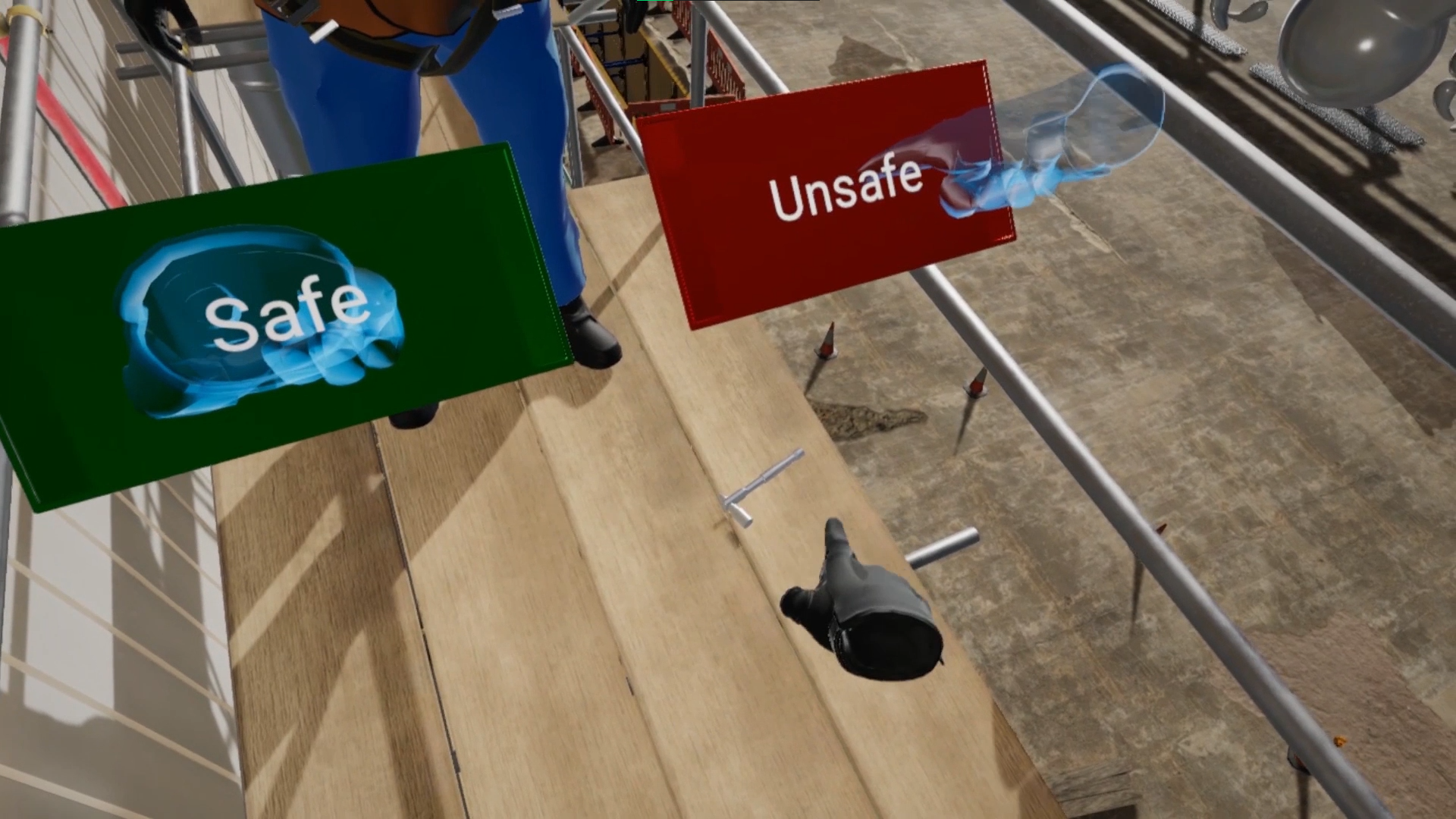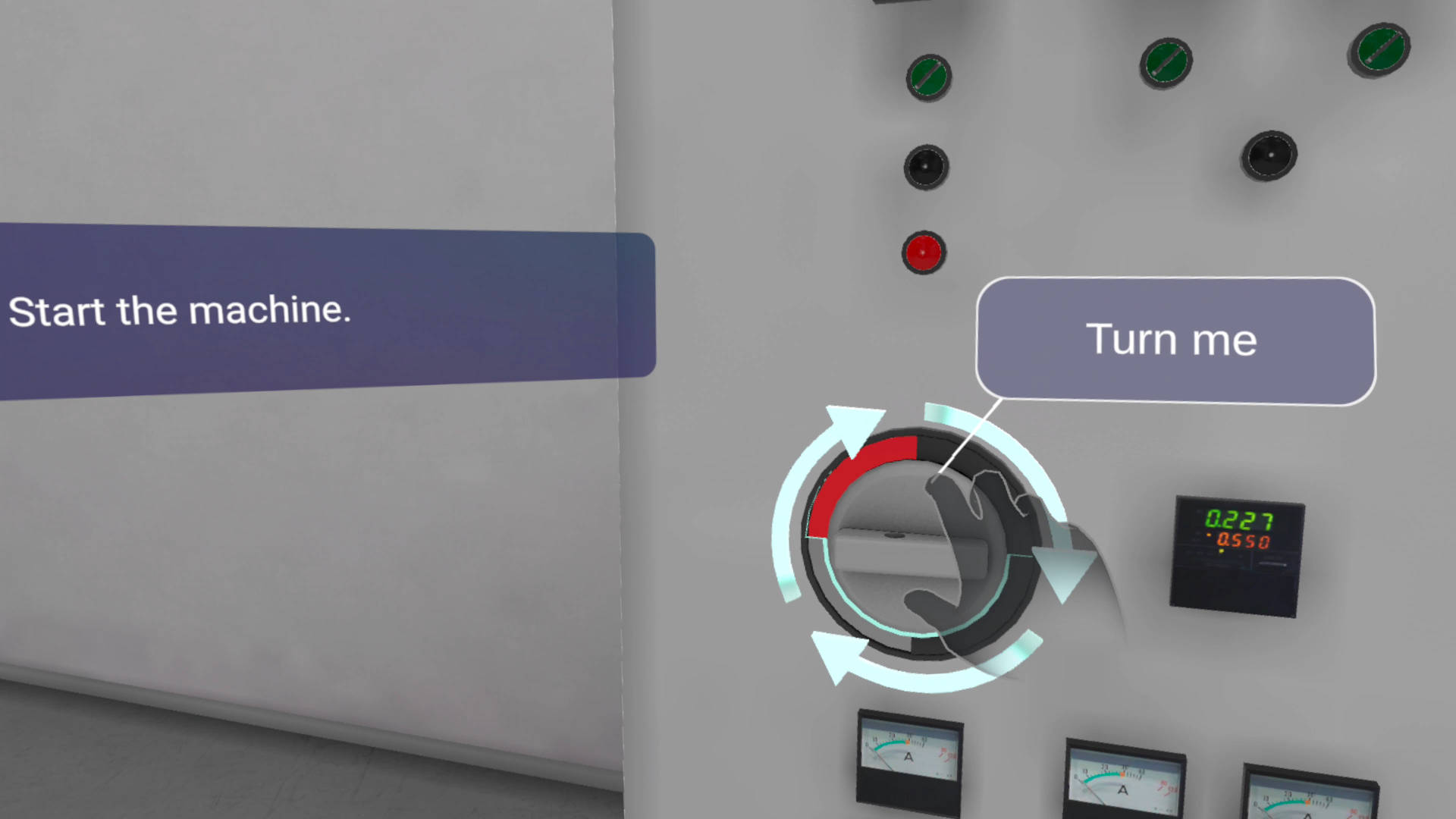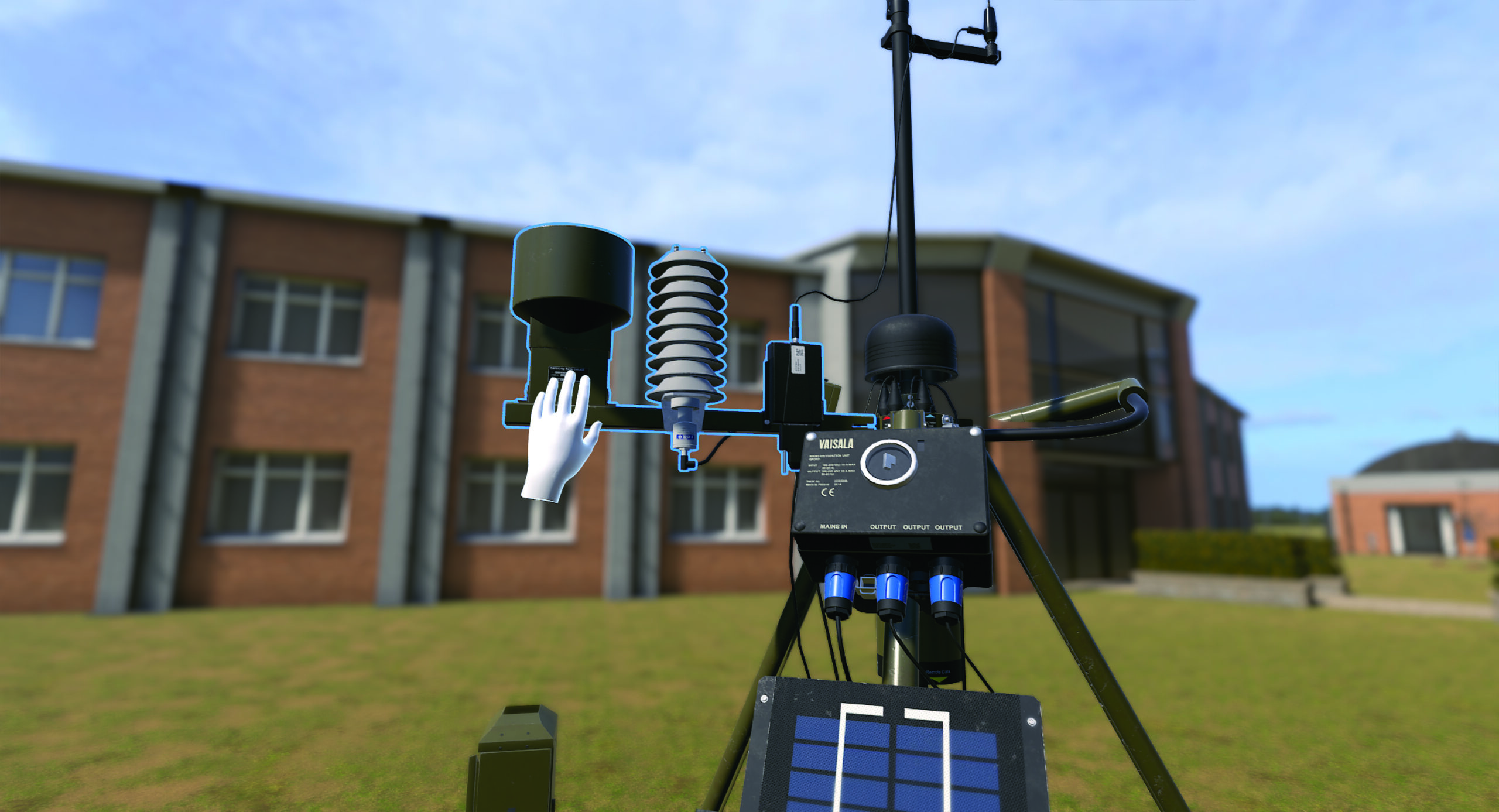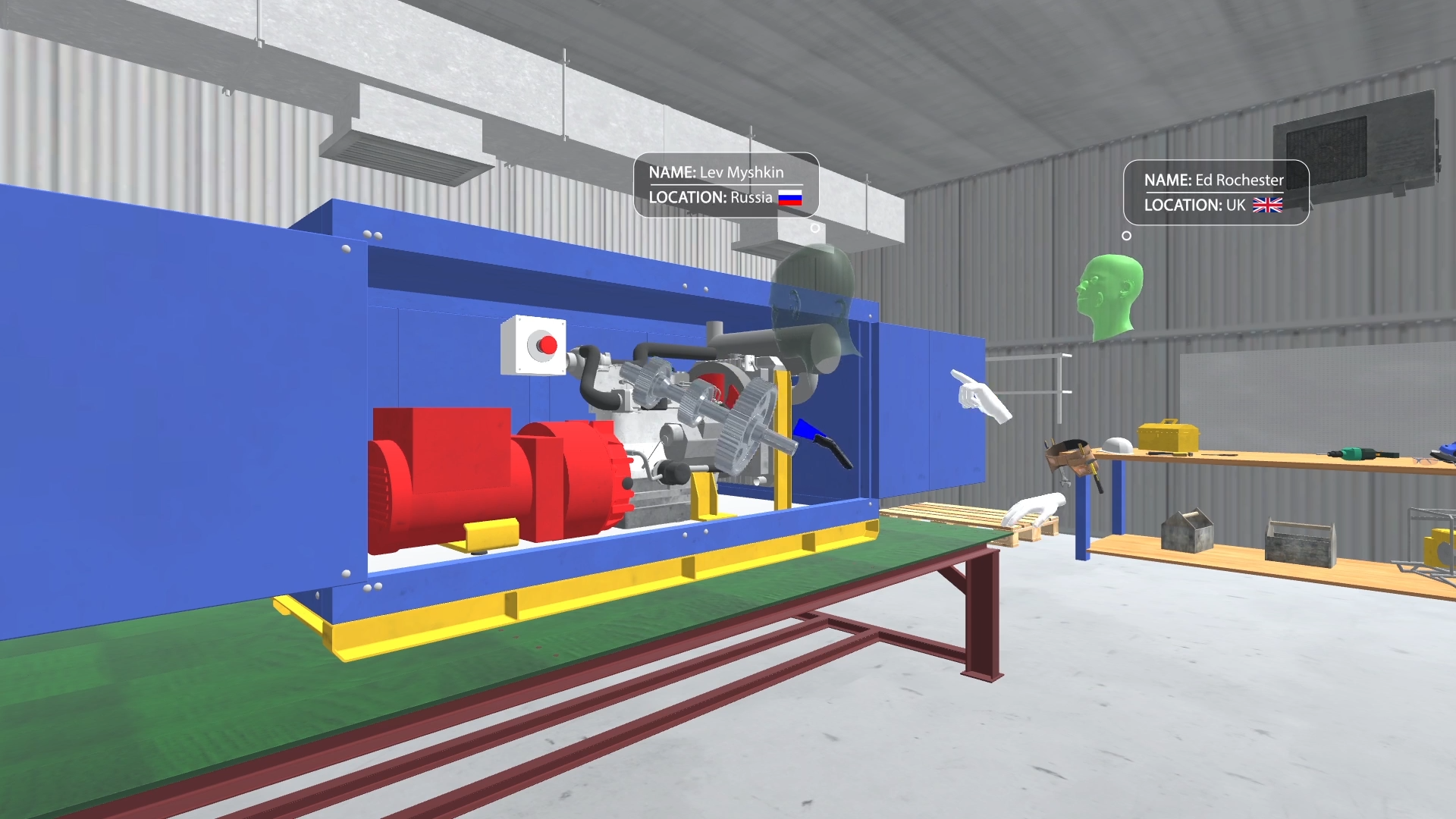In today’s rapidly evolving training landscape, understanding the VR training benefits can be a game changer for organizations looking to enhance their learning and development strategies. As businesses increasingly recognize the importance of effective training methods, the shift toward Virtual Reality (VR) training emerges as a compelling solution.
This innovative approach not only captivates learners but also addresses many of the challenges associated with traditional training methods.
In this article, we will explore ten vital benefits highlighting virtual reality’s transformative potential for training employees.
1. Increase Safety Using VR
One of the most significant VR training benefits is the ability to create a safer learning environment. By simulating high-risk scenarios, employees can practice crucial skills without the fear of real-world consequences. For example, a construction worker can learn to operate heavy machinery or navigate hazardous environments without putting themselves or others in danger.
At SHIIFT Training, we focus on creating VR training experiences that prioritize safety, particularly in high-risk industries like construction. Our simulations enable workers to engage with realistic scenarios that help them develop their skills safely and effectively. Our ammonia transfer training VR program exemplifies this safety benefit. It allows users to practice the dangerous ammonia transfer process step by step in a safe, controlled environment, aiding in memorization and muscle memory.
- The controlled setting boosts user confidence
- Naturally embed essential skills into the brain
- Significantly reduce risk of accidents in the workplace
For a closer look, check out the Nutrien Ammonia Transfer VR Training Video we produced, showcasing how VR training enhances safety.

Unmatched Safety – SHIIFT Training’s ‘Working at Height’ VR Training Program
2. Increase Learning Retention and Engagement With VR
Research has revealed that learners retain up to 75% of information delivered through immersive simulations, compared to just 10% from traditional lecture-based training.This remarkable retention is largely due to the hands-on, experiential learning that VR provides, allowing individuals to practice skills in a realistic setting. Additionally, the sense of presence created by VR technology makes learning enjoyable and impactful, keeping learners motivated to participate actively.
Our Lockout Tagout (LOTO) Energy Isolation training is an excellent example of leveraging VR for retention and engagement. By immersing users in realistic energy isolation scenarios, they can practice vital skills repeatedly, ensuring that critical safety procedures are thoroughly understood and remembered.
Discover more about how we took advantage of another one of these amazing benefits of VR Training to create a transformative training tool for Daikin Global’s manufacturing lines and Kinross Gold‘s processing facilities in the case study for our state of the art Lockout Tagout Training, powered by virtual reality which hugely boosts the employee learning retention.

Remarkable Retention and Engagement – SHIIFT Training’s Lockout Tagout Tryout VR Training Program
3. Instant Feedback: Real-Time Assessments
Another significant advantage of VR training is the provision of real-time assessments. Instructors can monitor learners’ progress as they navigate through simulations, offering immediate feedback. This rapid reinforcement identifies areas needing improvement, ensuring that participants develop the necessary competencies more effectively.
SHIIFTTraining is a firm believer of integrating virtual assessments and quizzes in our training applications, this effectively tests learners on what they’ve learnt and allows learning staff to identify each individual user’s flaws and skills, for a complete understanding of where a learner needs to focus. Assessments are always integrated to whichever LMS our client needs the data on, keeping it centralized with their other traditional training courses.
- Immediate feedback loop accelerates learning process
- Encourage learners to self-reflect on their performance during the training
- Instant feedback allows employees to foster a deeper understanding of the training material
- Enhance training effectiveness with dynamic response and refining skills on the spot
At SHIIFT we use a real-time assessment approach whenever we can in our virtual training projects, such as Nutrien Driver Training, Nutrien Ammonia Training, Lockout-Tagout VR Training, James Hardie Jobsite Training, etc.
4. Cost-Effective Training Solutions: Maximizing Resources
By shifting to VR raining, organizations can significantly lower costs associated with traditional methods. This includes savings on travel, materials, and instructor fees. For example, companies that previously had to send employees to remote training locations can now conduct immersive training sessions virtually, eliminating the need for travel expenses and logistics.
Additionally, VR training programs can scale easily, allowing multiple employees to engage in the same immersive experience without incurring extra expenses. This scalability is particularly beneficial for organizations with large teams or multiple locations, as it provides consistent training experiences across the board. As a result, companies not only save money but also maximize their training resources, leading to a more efficient and effective approach to employee development.
A prime example of cost savings through VR is our U.S. Air Force VR Military Training, which utilizes an incredibly realistic digital twin of all the components for a tactical meteorological observation system, known as a TMQ-53 where users can learn and practice to assemble the entire equipment from it’s numerous components.
This project undeniably revolutionized the logistical challenges of training on such expensive military equipment. SHIIFT Training saved the U.S Air Force $2,500,000 in the first 6 months alone. When the final product was initially presented to the air force, they were amazed to see our application tester complete the full physical process with ease after seeing and interacting with the physical equipment for the first time, he was able to shock them with how capable he was thanks to the muscle memory he gained from testing the product.
- Cancel out costs on needing to use equipment with low availability
- Reduce damage to real equipment, with virtual equipment that’s almost just as good
- Form muscle-memory without equipment that costs millions of real dollars
- Maximize training resources by scaling one digital twin of an equipment to be used as many times as you need by as many employees at the same time anywhere in the world
This approach ensures that users can familiarize themselves with all components of the expensive equipment without the logistical challenges associated with in-person training. Read more on what the United States Air Force had to say about our innovative training solution.
5. Customizable, Tailored Learning Experiences
Every organization has unique training needs, and VR offers a level of customization that traditional methods often lack. Training modules can be specifically designed for particular roles or scenarios, ensuring that employees receive relevant instruction that directly applies to their work context, enhancing overall training effectiveness.
For instance, a healthcare organization can create VR simulations that mimic specific medical procedures, allowing staff to practice their skills in a realistic environment tailored to their needs. This level of customization not only increases the relevance of the training but also engages learners by providing them with scenarios that they are likely to encounter in their day-to-day work.
As a result, employees are more likely to feel invested in their training, leading to higher completion rates and improved performance on the job.
Our James Hardie Jobsite Training Program highlights this tailored approach by providing immersive training experiences that cater specifically to the unique safety risks faced on job sites, specifically James Hardie housing construction job sites during the cladding process. This program enhances engagement while ensuring that learners are well-prepared for real-world scenarios, and was tailored exactly as James Hardie’s safety guidelines required.
For more information, see our Case Study of James Hardie Construction Jobsite Training.
6. Speeding Up Skill Development
With the ability to have hands-on practice in a realistic virtual environment, learners can achieve competency faster. This efficiency leads to improved productivity and contributes to a more skilled workforce, ready to tackle challenges.
For example, VR training can significantly shorten the learning curve for complex tasks, allowing employees to quickly acquire the necessary skills and knowledge required for their roles. Instead of spending weeks or months in traditional training programs, employees can gain the same level of proficiency in a fraction of the time through immersive VR experiences.
This acceleration not only benefits the individuals undergoing training but also positively impacts the organization as a whole by ensuring that teams can perform their tasks effectively and efficiently, ultimately driving business success.
Our TMQ53 Weather Station Assembly Training (Video Linked) as mentioned above in benefit number 4, is also a perfect example of this, as the U.S Air Force witnessed in shock when they saw first-hand how capable our tester was at something they still need regular training for themselves.

Accelerated Time to Competency – SHIIFT Training’s ‘TMQ53 Assembly’ VR Training Program
7. Increased Training Accessibility
VR training can also make learning more accessible for remote teams or employees with mobility challenges. Virtual reality can deliver training experiences to individuals who may otherwise struggle to participate, ensuring equal opportunities for learning and growth. For instance, employees in remote locations can engage in the same training modules as their peers in the office, bridging the gap between on-site and off-site training.
Additionally, VR training can accommodate diverse learning styles, providing visual, auditory, and kinesthetic experiences that cater to a wide range of learners. By breaking down geographical and physical barriers, VR training promotes inclusivity and ensures that all employees have the chance to develop their skills and advance their careers.
Our James Hardie Distracted Driving Experience exemplifies how immersive VR training enhances accessibility for all learners. By placing users in the shoes of someone facing real driving hazards, this experience creates an engaging and impactful learning environment that traditional training cannot replicate.
- Cater to diverse learning styles
- Provide equal opportunities for individuals who struggle with traditional training methods
By enabling users to experience and understand the consequences of distracted driving in a safe virtual setting, we promote safer behaviors and foster a more inclusive training experience. Learn more about this project in our case study.
Another example is our Lockout Tagout VR Training, this example uses voiceovers, visual cues with instructions, and hand-tracking to increase accessibility to help suit different types of learners.
8. Enhancing Team Skills and Employee Collaboration
Virtual reality facilitates collaborative training sessions where employees can interact with one another in a shared virtual space. This teamwork fosters essential communication skills, crucial for success in many roles and contributes to a more collaborative culture within organizations. In VR, employees can engage in team-based scenarios that require them to solve problems together, make decisions, and communicate effectively.
This collaborative learning experience not only enhances individual skills but also strengthens team dynamics, encouraging employees to build relationships and trust. By investing in dynamic collaborative learning, organizations can create a workforce that is better equipped to tackle challenges and achieve shared goals.

Dynamic Collaborative Learning – One of SHIIFT Training’s early multiplayer prototypes
SHIIFT confined space training is a great example of how we took advantage of this dynamic collaborative learning for the Ministry of Defence.
It allows multiple learners to mission rehearse their defense diver training and immerses users in a realistic confined space, avoiding the cost of needing to create the same concepts in the real world.
9. Hands-On Familiarization with Equipment: Real-World Experience
For industries dealing with complex machinery or equipment, VR can create digital twins for hands-on practice. This allows employees to familiarize themselves with tools and systems before operating them in real life, significantly reducing the risk of mistakes and enhancing overall safety. For example, in the manufacturing sector, workers can practice assembling machinery in a virtual environment, gaining valuable insights into the components and processes involved.
This level of familiarity is especially crucial when working with expensive or sensitive equipment, as it minimizes the potential for costly errors. By providing employees with realistic, hands-on experiences in a controlled environment, organizations can ensure that their teams are well-prepared and confident when transitioning to real-world applications.
Our LNG VR Training program is a prime example of this hands-on familiarization approach, offering users the opportunity to practice navigating complex systems in a realistic, immersive environment. This training fosters a deeper understanding of the equipment and prepares learners for real-world challenges.
10. Engaging Immersive Simulations
Finally, the immersive simulations in VR transport users to different environments and situations. From practicing emergency procedures to experiencing driving hazards, these realistic scenarios provide a level of immersion that traditional training methods cannot match, making learning more impactful and memorable. The ability to immerse learners in lifelike situations allows them to experience challenges firsthand, deepening their understanding and empathy toward various scenarios.
This engagement can lead to more profound insights and a greater sense of responsibility, as learners actively participate in their training rather than passively absorbing information. The end result is a more informed, responsible workforce equipped to handle real-world challenges effectively.
Here are some examples of Shiift projects that utilize immersion to create an incredibly engaging VR experience. On one hand we have Schneider Virtual Reality Driver Training which involves an immersive pre-trip and left-hand-turn interactive VR training experience, and we also have our James Hardie VR Driver Training.
The James Hardie example is an excellent example of how immersive simulations can be used to increase safety, as we placed their users into driver perspective of irresponsible driving before shocking them into experiencing a realistic crash. The suddenness while being in the immersive situation helps to engage users for the distracted driving awareness in a way that a video or article wouldn’t be able to do.
Closing Thoughts on the Benefits of Virtual Reality
Embracing VR technology signifies a commitment to innovation and forward-thinking in training practices. Organizations that adopt VR are positioning themselves as industry leaders, attracting top talent who value modern, engaging learning experiences. As the business landscape continues to evolve, staying ahead of the curve by integrating advanced training technologies will be crucial for organizations looking to maintain a competitive edge. The future of training lies in immersive, engaging solutions that drive results, and VR is at the forefront of this revolution.
The advantages of incorporating VR training are clear and far-reaching. By leveraging these benefits, organizations can create safer, more effective, and engaging learning environments that ultimately lead to a more skilled workforce. As you consider the next steps for your training programs, think about how shifting to virtual reality could transform your organization’s approach to learning and development. With its ability to enhance safety, learning retention, employee retention and engagement, VR training is not just a trend; it’s a powerful tool for shaping the future of employee training.
Moreover, organizations can create terrific training experiences that go beyond traditional methods, fostering a culture of continuous learning and development.



